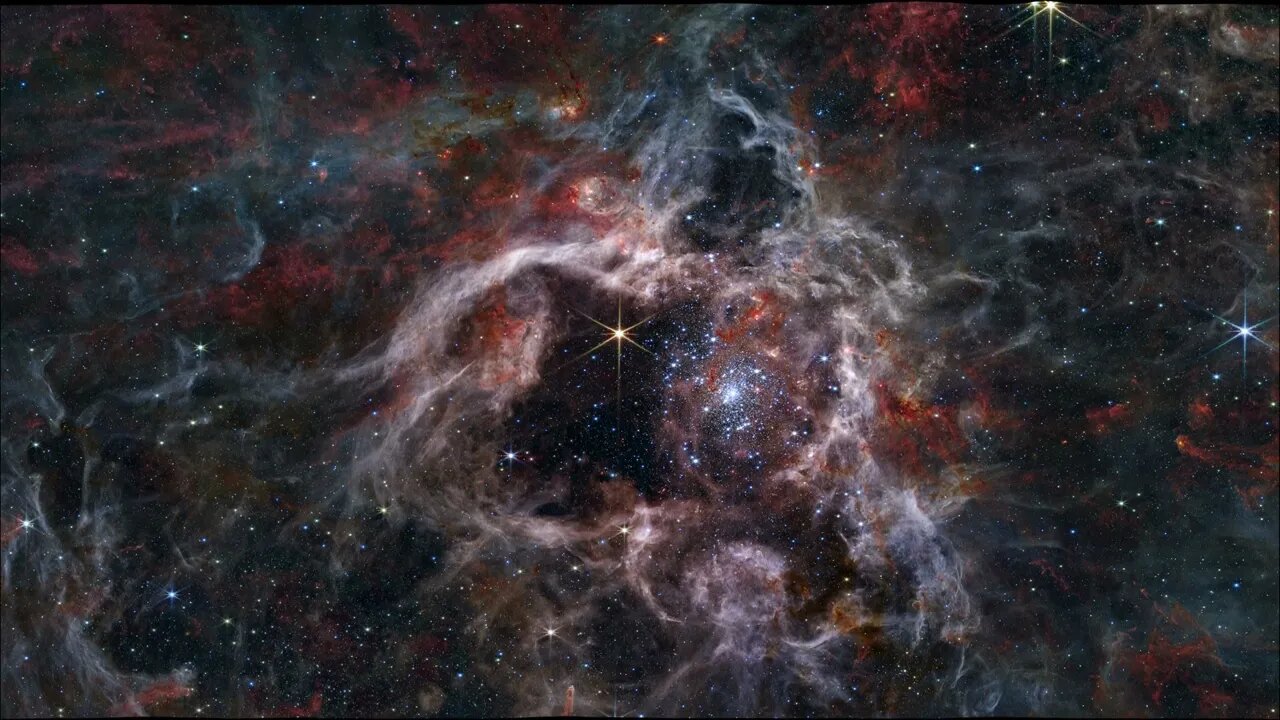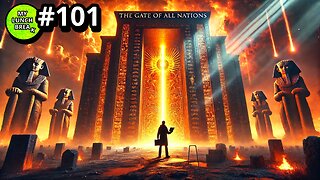Premium Only Content

Exploring the Wonders of the Tarantula Nebula with the James Webb Space Telescope's 3D #short
In this episode, we bring you an exclusive glimpse of the Tarantula Nebula captured by the James Webb Space Telescope's Near-Infrared Camera in 3D. The mosaic image that we're going to explore today stretches 340 light-years across and unveils tens of thousands of young stars that were previously hidden by cosmic dust. By applying custom depth map algorithms and filters, we'll showcase the infinite image processing possibilities that exist when exploring the wonders of our universe.
As we explore the image, we'll take a closer look at the most active region of the Tarantula Nebula, which appears to sparkle with massive young stars, appearing pale blue. We'll also see still-embedded stars, appearing red, yet to emerge from the dusty cocoon of the nebula. Thanks to its unprecedented resolution at near-infrared wavelengths, NIRCam is able to detect these dust-enshrouded stars that were previously invisible to us.
We'll also explore the chemical makeup of the star and its surrounding gas by looking at the spectral information captured by two of Webb's spectrographs. This information will tell astronomers about the age of the nebula and how many generations of star birth it has seen.
As we move farther from the core region of hot young stars, we'll discover cooler gas that takes on a rust color, telling astronomers that the nebula is rich with complex hydrocarbons. This dense gas is the material that will form future stars, and we'll learn how winds from the massive stars sweep away gas and dust to form new stars.
So join us as we embark on a fascinating journey to explore the Tarantula Nebula and the infinite possibilities of image processing with STYX AI. Don't forget to like, comment, and subscribe to our channel to stay updated with the latest space news and discoveries!
Object Name Tarantula Nebula, 30 Doradus, 30 Dor, NGC 2070
Object Description Emission Nebula in the Large Magellanic Cloud
Constellation Dorado
Distance 170,000 light-years (52,000 parsecs)
Dimensions Image is 7.24 arcmin across (about 360 light-years)
Instrument NIRCam
Exposure Dates 2 June 2022
Filters F090W, F200W, F335M, F444W
Credits:
OEM IMAGE: NASA, ESA, CSA, STScI, Webb ERO Production Team
Everything Else: STYX AI
@NASA @NASAGoddard @NASAJPL @NASAgovVideo @EuropeanSpaceAgency @NASAWebbTelescope
-
![If You Smell LALALALA What CHiLi IS COOKING!!... #RUMBLETAKEOVER [Overwatch 2]](https://1a-1791.com/video/s8/1/e/s/X/3/esX3u.0kob-small-If-You-Smell-LALALALA-What-.jpg) 4:27:40
4:27:40
CHiLi XDD
12 hours agoIf You Smell LALALALA What CHiLi IS COOKING!!... #RUMBLETAKEOVER [Overwatch 2]
31K1 -
 12:00:03
12:00:03
Delnorin Games
13 hours ago🔴 Live - Star Citizen
68.7K13 -
 1:39:44
1:39:44
HELMET FIRE
14 hours agoDEADROP IS BACK!
151K10 -
 10:03
10:03
Tundra Tactical
16 hours ago $15.40 earnedBrandon Herrera Vies Bid for ATF Director!
97.2K17 -
 22:01
22:01
DeVory Darkins
1 day ago $37.55 earnedHakeem Jeffries SHUTS DOWN The View as Matt Gaetz Speaks out
85.6K140 -
 2:02:54
2:02:54
Mally_Mouse
15 hours agoLet's Play!! - Spicy Saturday
64.3K2 -
 1:33:06
1:33:06
Slightly Offensive
16 hours ago $31.89 earnedAre You Ready for What's Coming Next? | Just Chatting Chill Stream
80.6K42 -
 32:10
32:10
MYLUNCHBREAK CHANNEL PAGE
1 day agoThe Gate of All Nations
151K67 -
 13:07
13:07
Sideserf Cake Studio
20 hours ago $3.92 earnedIS THIS THE MOST REALISTIC SUSHI CAKE EVER MADE?
66.6K4 -
 21:08
21:08
Clownfish TV
1 day agoElon Musk Tells WotC to BURN IN HELL for Erasing Gary Gygax from DnD!
53.9K16